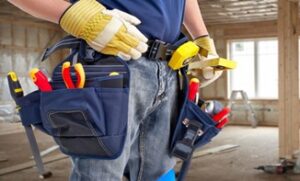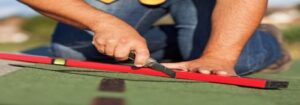WEEK 1: Hand Injuries


Each year in the US over 16 million people suffer hand injuries; over 250,000 of those are serious and disabling. The hand is one of the most complex parts of your body – the movement of the tendons, bones, tissues and nerves allows you to grip and do a wide variety of complex jobs.
Without your hands it would be extremely difficult to do routine simple tasks, such as opening doors, using a fork, or tying your shoes. Tuck your thumb into your palm and imagine trying to tie your shoes. It would be extremely difficult.
Hand injuries are difficult to repair because of the complexity of the hand. After a hand injury, the hand may not function as it did before the injury due to loss of motion, dexterity and grip.
Over 25% of all industrial injuries involve the hand, wrist and fingers. Typical injuries include:
- Puncture wounds
- Lacerations
- Broken fingers
- Contusions
- Thermal Burns
- Chemical Burns
These injuries occur when:
- Cutting or using a sharp tool
- Using hand tools
- Reaching into moving parts
- Working with chemicals
- Touching something hazardous (electrical or thermal)
This week we’ll look at preventing hand injuries.
I HAVE READ AND UNDERSTAND THE TOOLBOX TALKS FOR THIS MONTH AND CONFIRM THAT
“SAFETY IS PRIORITY NUMBER 1!”
Week 2 Hand Injuries – Lacerations



In a recent study of hand injuries the leading cause of injury was contact with cutting or piercing objects, most often pieces of metal, razors and knives, power tools and nails. Fingers and hands were the most-injured body parts among the construction workers in this study, accounting for one-third of emergency room visits. About 15 percent of these injuries were amputations, partial amputations, crushes and fractures. About 63 per cent involved a laceration.
So how can we reduce hand injuries? A recent study found that wearing gloves reduced the relative risk of injury by 60 percent. We have seen here in our own facility and through the corporation that the wearing of cut-resistant gloves and cut-resistant sleeves when handling or working around cut hazards had dramatically reduced lacerations.
The study also showed that workers reported that they had worn gloves only 27 percent of the work time, and only 19 percent reported wearing gloves at the time of the injury. Gloves are only effective when you wear them.
To reduce the chance of injury when working around cut hazards it is important that you wear the cut-resistant gloves and sleeves. They are made of Kevlar or Dyneema and offer cut resistance to sharp objects. Understand, they are certainly not cut-proof, however they afford you much protection when working with and around sharp items such as:
- Utility knives
- Saw blades
- Dies
- Knives
- Sheet Metal
- Glass
- And similar cut hazards
I HAVE READ AND UNDERSTAND THE TOOLBOX TALKS FOR THIS MONTH AND CONFIRM THAT
“SAFETY IS PRIORITY NUMBER 1!”
Week 3 Hand Injuries – Hand Tools


Here are some facts about hand injuries and hand tools:
- Some 30,000 persons are injured annually using hammers.
- 25,000 using standard blade screwdrivers & crescent wrenches.
- Each year, more than 115,000 Americans end up in the emergency room as a result of hand-tool-related injuries.
The improper use of hand tools causes many injuries everyday throughout the United States. Tools are not used as intended, they are used improperly or they are in poor condition. It is very important to inspect any hand tool prior to its use. Ensure the tool is not worn, broken and is in good working condition.
Here are some other tips:
Hammers
- Never use a hammer with a splintered, cracked, or loose handle
- Don’t use hammers with rounded striking faces
- Don’t strike a hammer face with another hammer
- Don’t use nail hammer claws as a pry bar
Wrenches
- Use the correct sized wrench for the job
- Don’t use pliers or crescent wrenches on bolt and nuts, use the proper wrench.
- Pull on wrenches rather than pushing them
- Never use a cheater bar on a wrench
Screwdrivers
- When using screwdrivers, place the object on a flat surface or in a vise, don’t hold it in your hand!
- Don’t use screwdrivers as chisels or pry bars
- Use the correct size driver for the screw
- Don’t use screwdrivers with chipped tips
I HAVE READ AND UNDERSTAND THE TOOLBOX TALKS FOR THIS MONTH AND CONFIRM THAT
“SAFETY IS PRIORITY NUMBER 1!”
WEEK 4: Hand Injuries- Awareness & Placement



Each year there are thousands of disabling injuries to the hands as people place their hands in places they would not normally think of placing them. Amputations, crushing injuries and the like occur as people touch moving or rotating parts on equipment and tools. Failure to use guards, kill-switches, or to follow appropriate lock-out procedures are among the leading hand hazards.
In many cases people are in a hurry and don’t think about the risk associated in doing such or aren’t aware of their proximity to the hazard in the first place. Every time you are near a moving piece of equipment your risk increases. It’s important to decrease that risk by not touching, leaning or in other ways coming in contact with the running machine.
Some hand injuries occur because people don’t know they were near the hazard. If you are RIGHT handed you need to pay particular notice of the position of your LEFT hand. We are accustomed to using one hand for many tasks and we “lose track” of the position of the less dominant hand. This less dominate hand ends up leaning or touching something as we are working and that increases our risk when around equipment.
I HAVE READ AND UNDERSTAND THE TOOLBOX TALKS FOR THIS MONTH AND CONFIRM THAT
“SAFETY IS PRIORITY NUMBER 1!”
